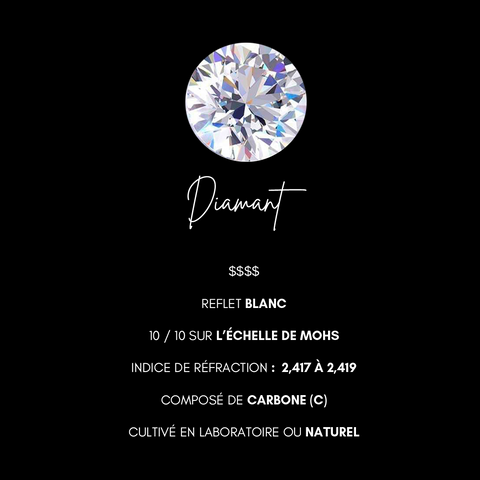
There are two types of diamonds. The first is the one that probably everyone knows, the natural diamond. These natural and precious stones that form in the earth over billions of years. The second, having the same properties, are diamonds grown in a laboratory.
No one can tell the difference between a natural diamond and a lab-grown diamond with the naked eye, even with a simple magnifying glass. The slightest differences are only visible with specialized equipment created for this purpose, which is very rarely available on the market and very expensive.
This precious and highly coveted stone, the diamond, is so rare that it can serve as an investment vehicle or an heirloom passed down from generation to generation. Diamond has a hardness of 10 on the Mohs scale , making it the hardest stone on earth. This characteristic also makes it extremely strong and durable for everyday use.
In terms of brilliance, natural diamond has less refraction and less color dispersion than lab-grown diamond and moissanite.
Lab diamond is a diamond that is man-made and usually takes one to two months to complete. Unlike natural diamonds, lab diamond is eco-friendly, durable, and much cheaper. If you are looking to own a diamond without spending too much money, lab diamond is a great choice. Apparently, the characteristics of diamond and lab diamond are exactly the same.

In recent years, moissanite has become very popular as an alternative to diamond; moissanite looks similar to diamond, but is much cheaper. Composed of silica and carbon (C), moissanite is reproduced in the laboratory. Why reproduced? This stone was originally discovered in 1893 in the Canyon Diablo meteorite, which fell about 50,000 years ago in Arizona, USA, and created the Meteor Crater .
Moissanite has on average more brilliance than diamond due to its refractive index of 2.65 to 2.69, compared to 2.417 to 2.419 for diamond. This means that moissanite reflects more light than diamond, provided you are comparing two stones that are similar in color, cut and size.
This dazzling stone has a hardness of 9.25 on the Mohs scale . It is second only to diamond in terms of hardness, which means you can be sure that your jewelry will last.
It cannot be considered a diamond. Both stones are different - from the way they are formed to their appearance. Moissanite has an artificial shine and does not have the value of a diamond. However, it is a very good alternative to it, it offers beautiful quality, is strong, but is also environmentally friendly and durable.

White sapphire corresponds to a corundum crystal without impurities, it is rare because most of the time, during its formation, its crystals are polluted by other chemical elements. This stone is a variety of sapphire that comes from corundum, although sapphire is usually blue in color it can sometimes take on a lighter or even colorless tint.
This gemstone has an estimated hardness of 9 on the Mohs scale , so it is very hard and can scratch all minerals except diamond, it is the second hardest natural mineral that exists on earth. The moissanite that we find on the market is harder than white sapphire, but made in a laboratory. There are also white sapphires made in a laboratory, which have been developed since 1920.
White sapphire can easily replace the traditional diamond in jewelry. It is a good substitute because it has a beautiful appearance, but its price is much more reasonable. It scatters light very well, which makes it a stone of choice to use in jewelry. However, given the development of lab-grown diamonds, moissanite and cubic zirconia which are so economical, this stone is often overlooked .

Cubic zirconia is what you might call a synthetic diamond, not to be confused with natural zirconia. Since diamond is very expensive, there was much research to find a low-cost equivalent during the 20th century. A succession of synthetic materials were proposed without much success. However, in 1970, Soviet scientists developed the first form of cubic zirconia as we know it today. Cubic zirconia is a synthetic stone and is produced in a laboratory under very high heat.
The word cubic found in the name indicates that the cubic zirconia is formed using a proven method to produce cubic-shaped crystals similar to diamond.
This stone looks a lot like diamond to the point of fooling most people who are not experts in the field. However, there are some major differences, which are as follows:
- Has no defects and is completely colorless
- Cubic zirconia is softer than diamond and can be scratched
- Cubic zirconia is very affordable. For example, a 1 carat diamond is worth around $20,000 compared to $20.00 for cubic zirconia.
- Cubic zirconia is heavier than diamond, almost 1.7 times heavier than a diamond of equal size.
- Cubic zirconia is available in several colors to resemble fine or precious stones in appearance.
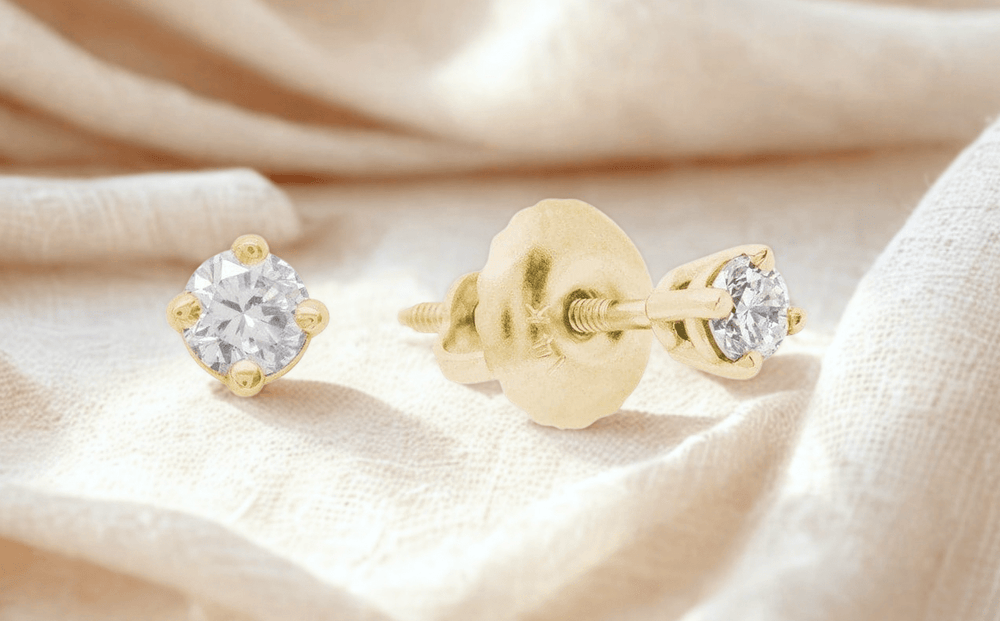

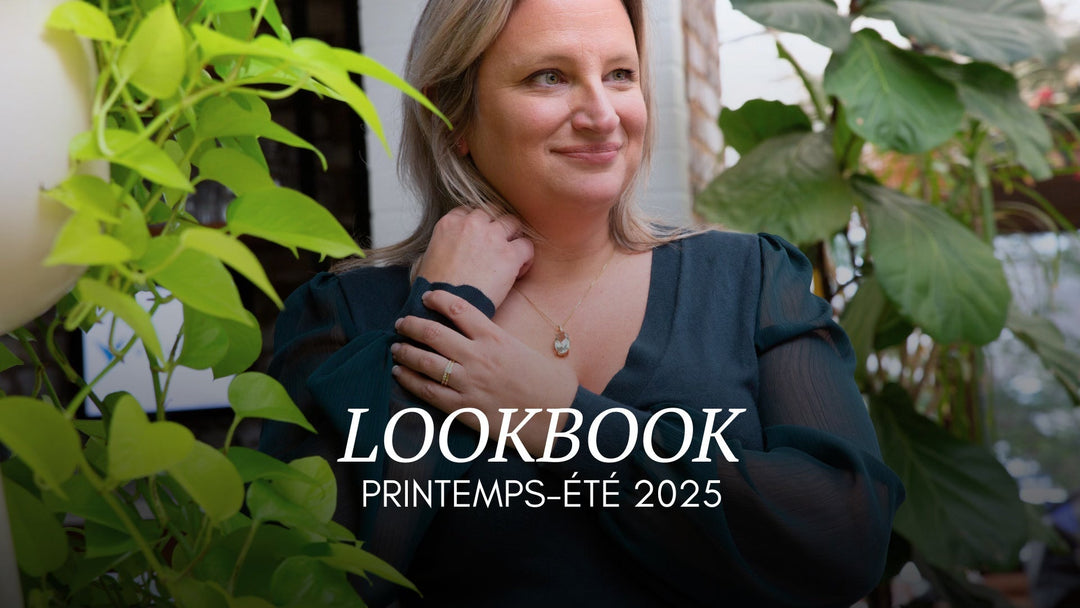
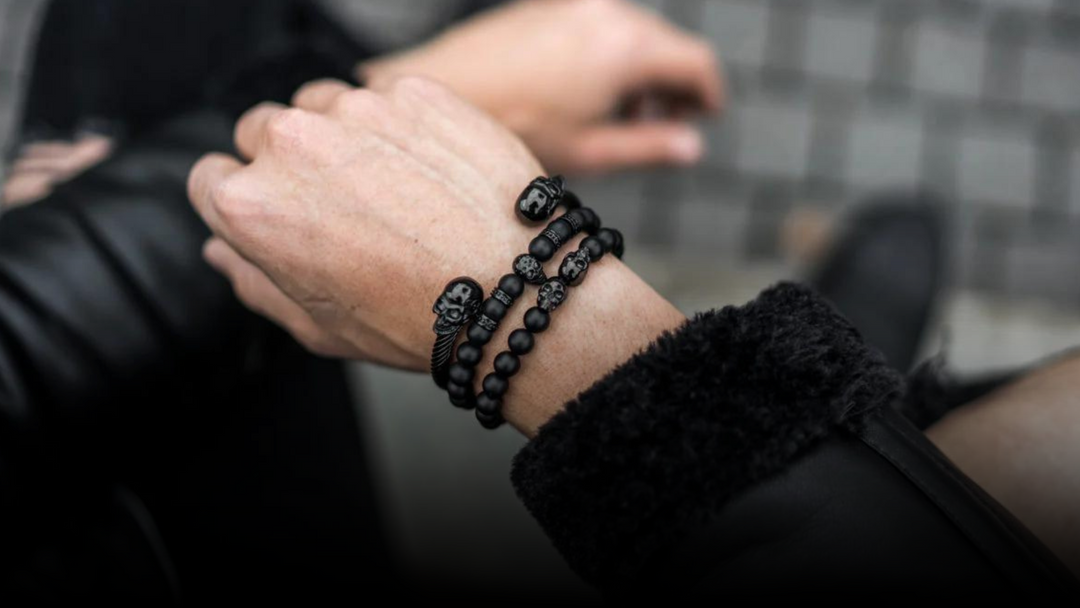
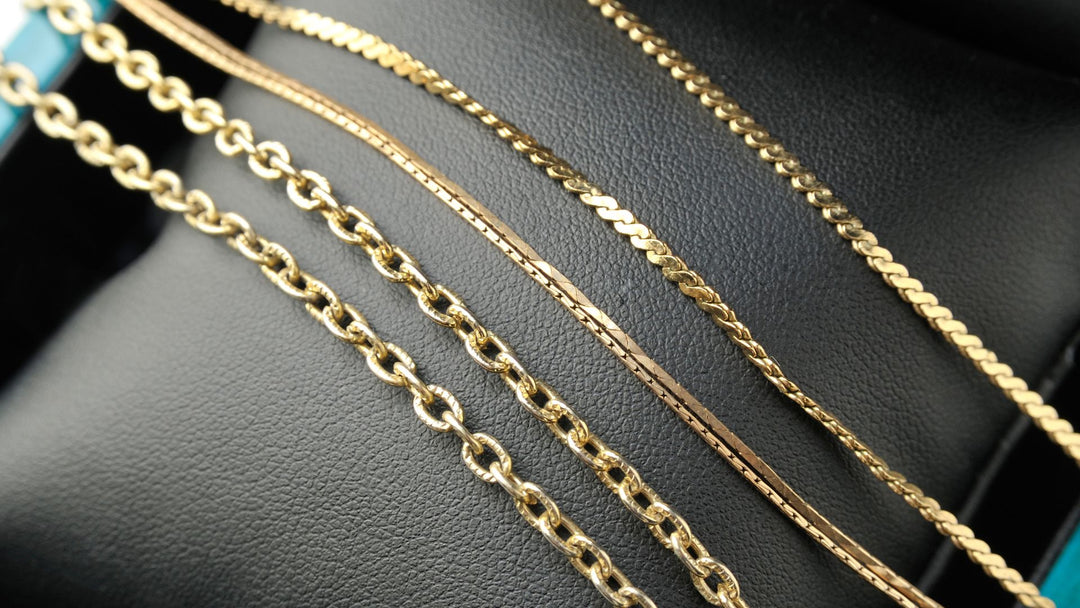
Leave a comment